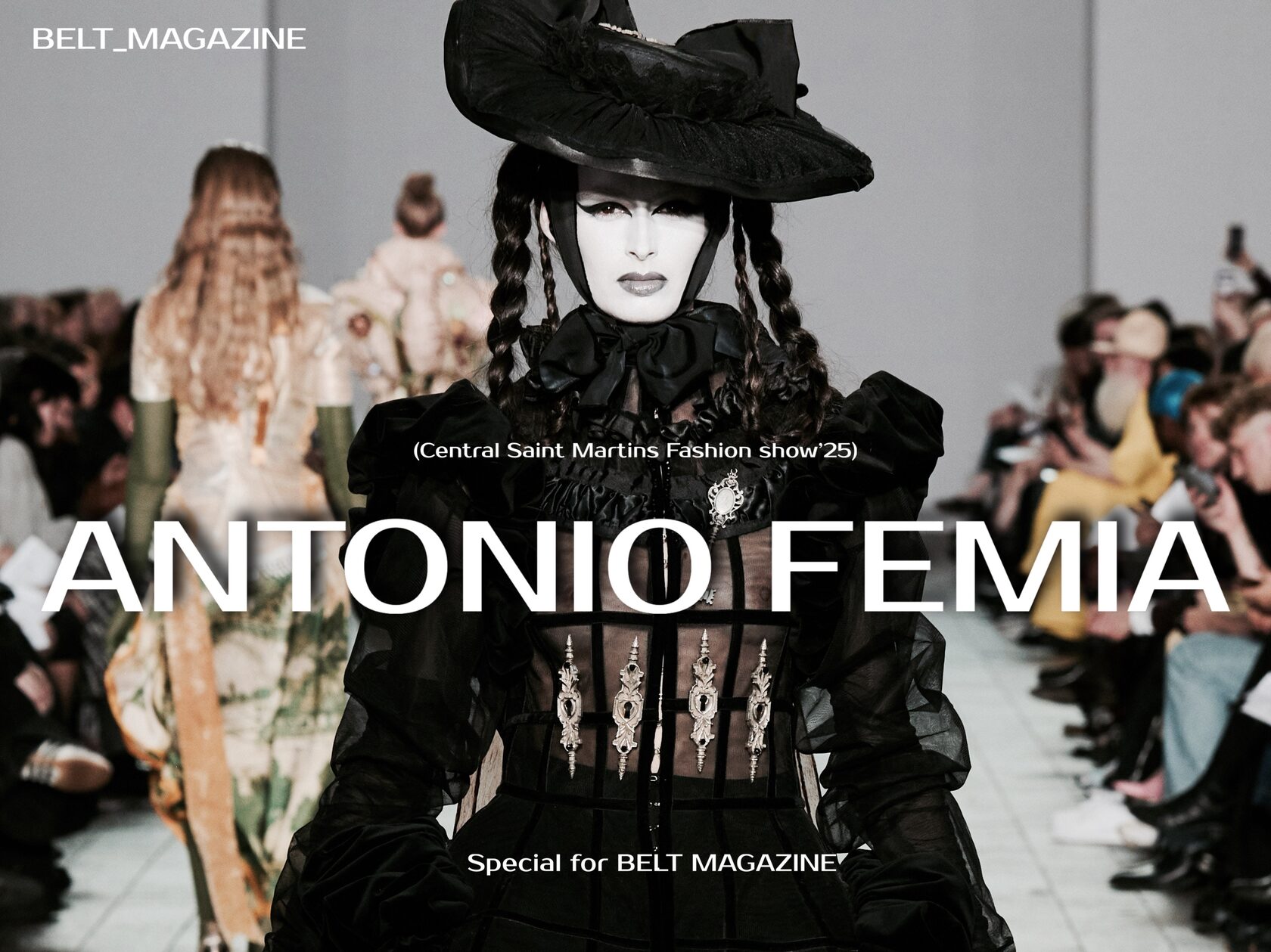In June, the annual graduate fashion show of Central Saint Martins students took place, as usual causing quite a stir. The graduates’ work is currently being discussed all over the world, and naturally, we couldn’t stay on the sidelines.
However, we decided that simply viewing the collection from the runway would be too dull.
That’s why the BELT team personally spoke with Central Saint Martins graduates and decided to publish a short series of articles where you’ll be able to learn about what inspired the students, how long they prepared for the show, and how the process of creating some of the looks unfolded. But that’s not all. The designers also shared their sketches and reference materials that inspired them. So, get comfortable, read, watch, and enjoy!
Antonio Femia: collection “Walk in the Forest”
The first graduate we had the chance to speak with was Antonio Femia. He has always been fascinated by everything related to the human form. Before enrolling at Central Saint Martins, he earned a Bachelor of Fine Arts degree. During his studies, he explored literature, art history, textiles, and how the human appearance has evolved over time. Antonio even wrote a thesis on “Metamorphoses in Fabric Structures.” It was after this that his teachers encouraged him to pursue fashion, leading him to apply to Central Saint Martins.
His graduate collection, titled “Walk in the Forest,” is a symbiosis of art, fashion, and nature. Antonio grew up in Hamme-Mille, Belgium, a town surrounded by forests. Thus, he draws inspiration from the forest, nature, flowers, and everything connected to them. We asked Antonio to tell us about three of his looks: “The Snail,” “The Secret Garden,” and “The Witch.”
However, we decided that simply viewing the collection from the runway would be too dull.
That’s why the BELT team personally spoke with Central Saint Martins graduates and decided to publish a short series of articles where you’ll be able to learn about what inspired the students, how long they prepared for the show, and how the process of creating some of the looks unfolded. But that’s not all. The designers also shared their sketches and reference materials that inspired them. So, get comfortable, read, watch, and enjoy!
Antonio Femia: collection “Walk in the Forest”
The first graduate we had the chance to speak with was Antonio Femia. He has always been fascinated by everything related to the human form. Before enrolling at Central Saint Martins, he earned a Bachelor of Fine Arts degree. During his studies, he explored literature, art history, textiles, and how the human appearance has evolved over time. Antonio even wrote a thesis on “Metamorphoses in Fabric Structures.” It was after this that his teachers encouraged him to pursue fashion, leading him to apply to Central Saint Martins.
His graduate collection, titled “Walk in the Forest,” is a symbiosis of art, fashion, and nature. Antonio grew up in Hamme-Mille, Belgium, a town surrounded by forests. Thus, he draws inspiration from the forest, nature, flowers, and everything connected to them. We asked Antonio to tell us about three of his looks: “The Snail,” “The Secret Garden,” and “The Witch.”
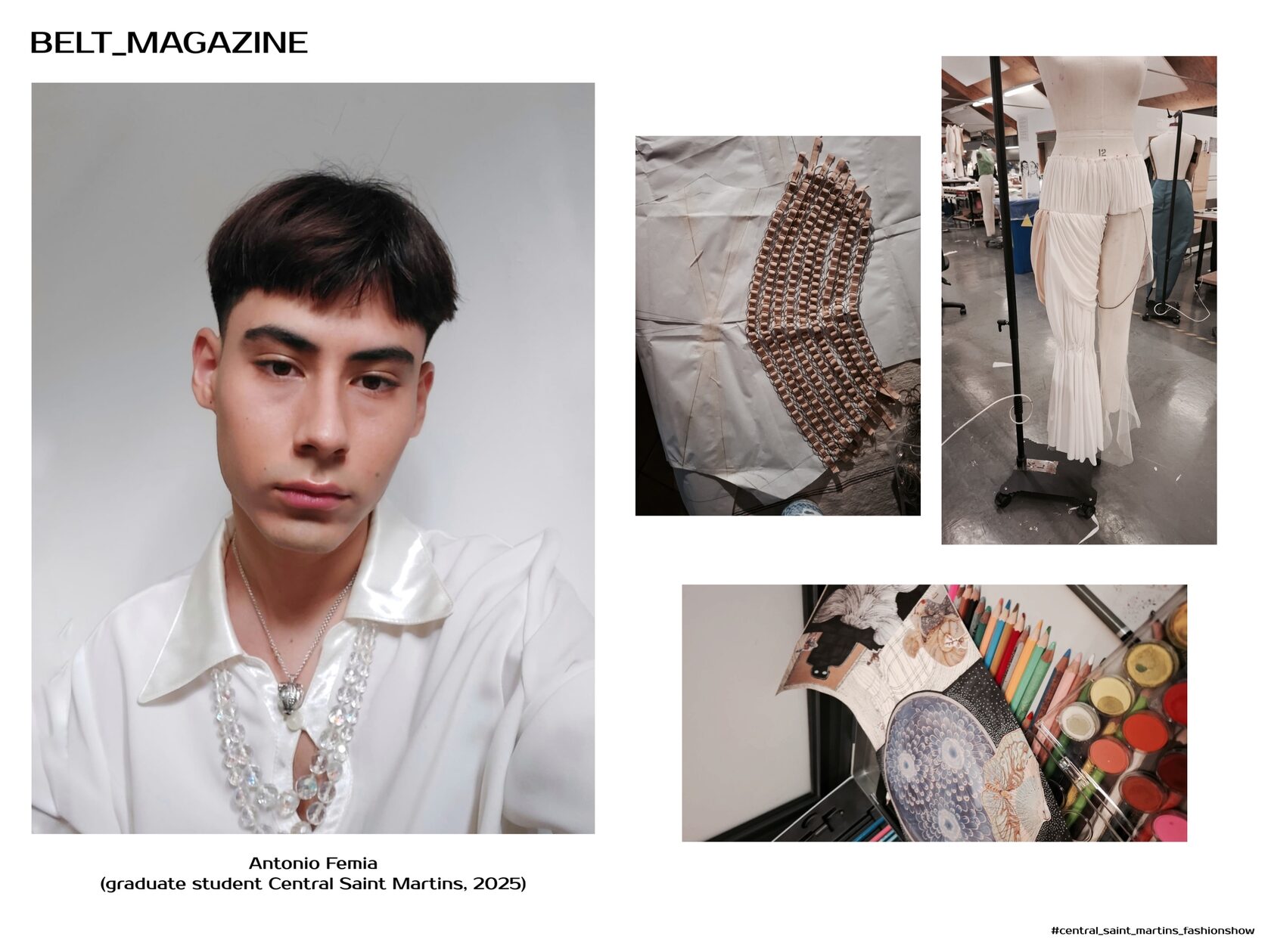
The look "The Snail"
The first look is called "The Snail." It can be described as a kind of "preface," an introduction to the collection. The look itself is filled with information and textures.
"When creating it, I was mainly inspired by snails. Where I live, there are many forests around, and the season when lots of snails come out is very long. For this look, I used dried snails I found to embroider the top, and I also made draped pants that mimic the slime trail left by the snails," Antonio shares.
The belt with insects was made by Jessica Segers, a jeweler from Antwerp. Antonio gave her insects encased in resin that he bought at flea markets, and she polished them like real gemstones to create a necklace that was eventually redesigned into a belt.
The first look is called "The Snail." It can be described as a kind of "preface," an introduction to the collection. The look itself is filled with information and textures.
"When creating it, I was mainly inspired by snails. Where I live, there are many forests around, and the season when lots of snails come out is very long. For this look, I used dried snails I found to embroider the top, and I also made draped pants that mimic the slime trail left by the snails," Antonio shares.
The belt with insects was made by Jessica Segers, a jeweler from Antwerp. Antonio gave her insects encased in resin that he bought at flea markets, and she polished them like real gemstones to create a necklace that was eventually redesigned into a belt.
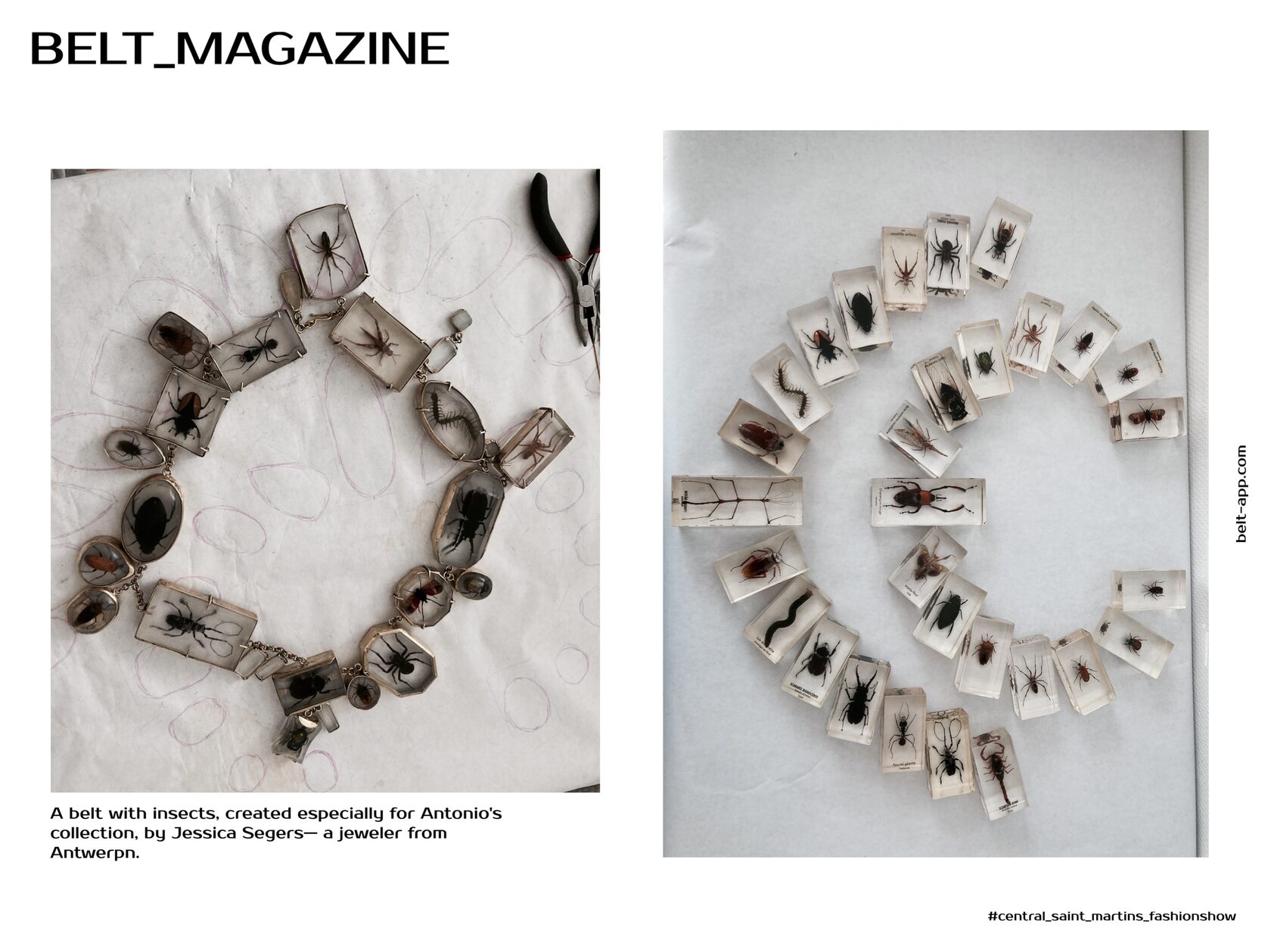
"By the way, flea markets and second-hand shops are very common in Belgian culture, and it was very important for me to use as many second-hand materials as possible in the collection," Antonio shared.
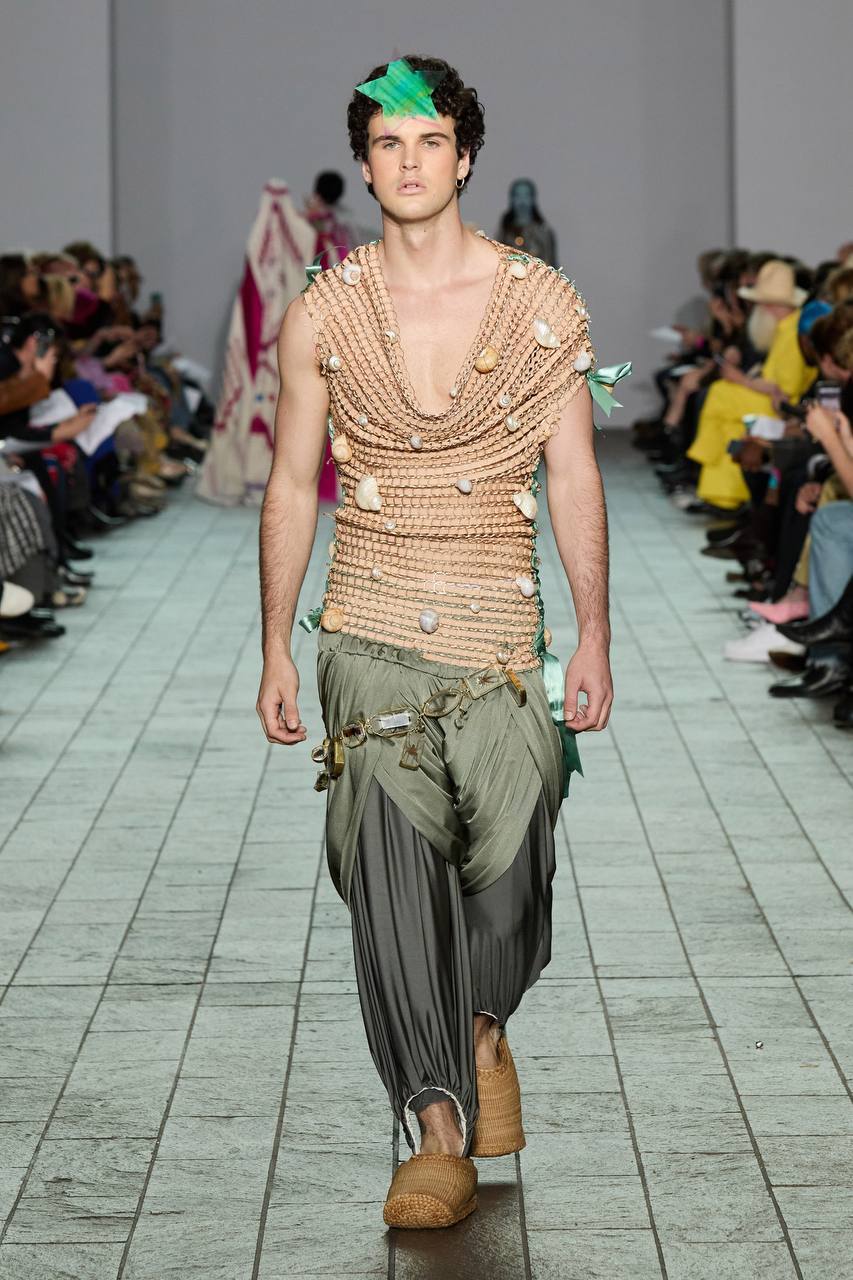
The look "The Secret Garden"
This part of the collection is truly fantastical. The pattern for the cage structure was inspired by the Royal Gardens of Laeken, huge glass buildings in the royal palace near Brussels.
This part of the collection is truly fantastical. The pattern for the cage structure was inspired by the Royal Gardens of Laeken, huge glass buildings in the royal palace near Brussels.
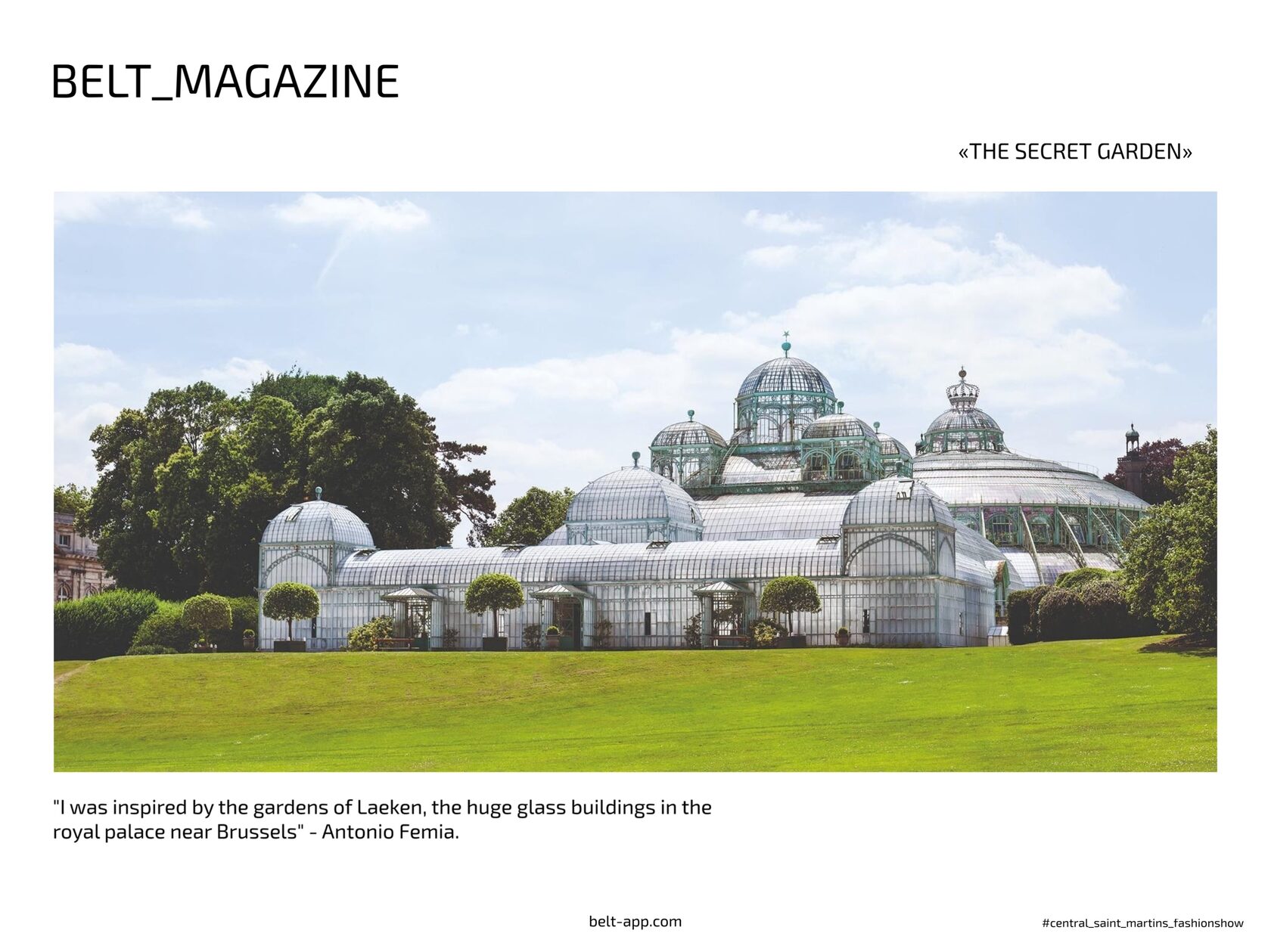
“In the dome structures grow many incredible plants, and I always imagined how much more beautiful they would be if the flora completely filled the space,” the designer explains.
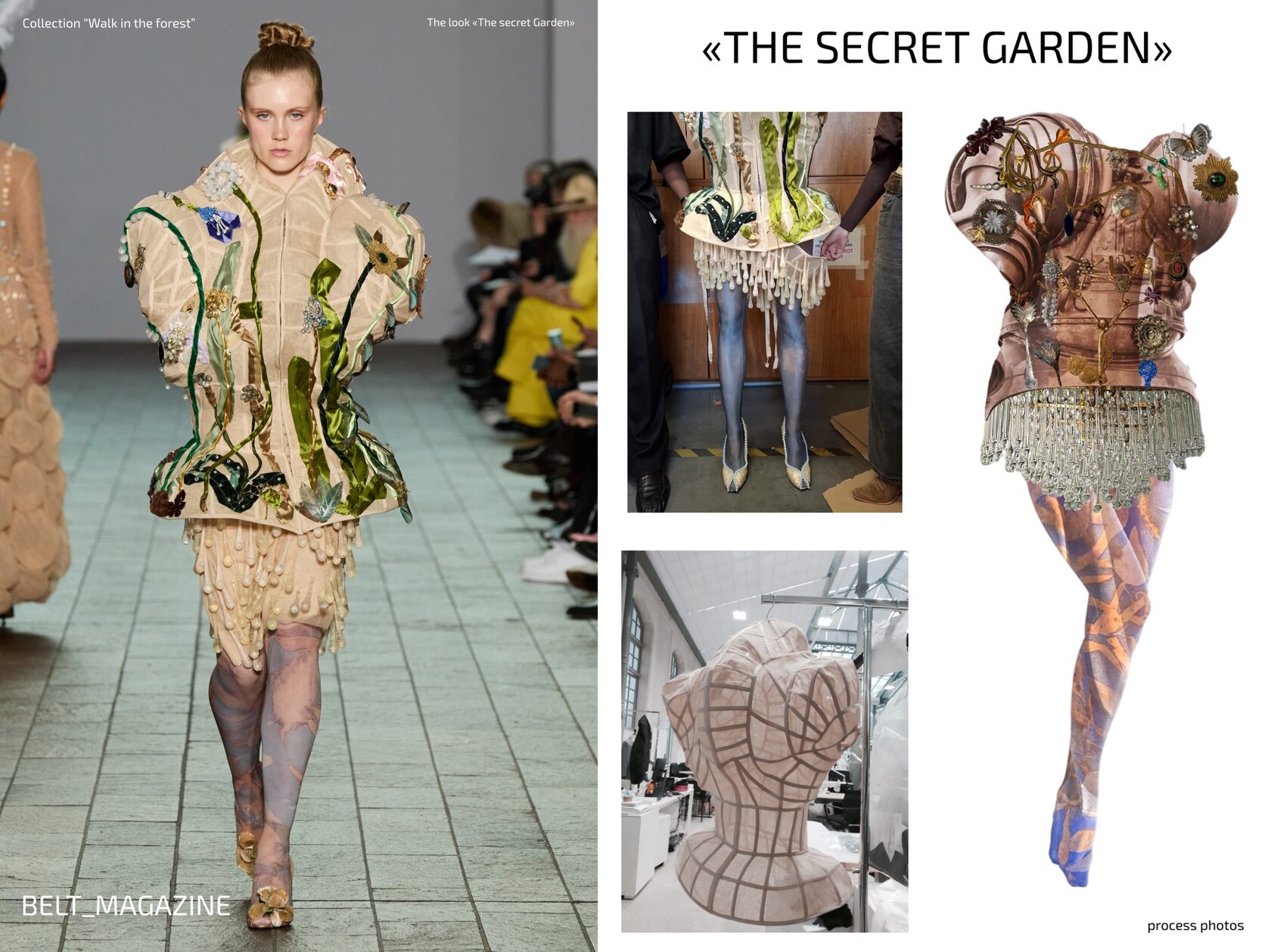
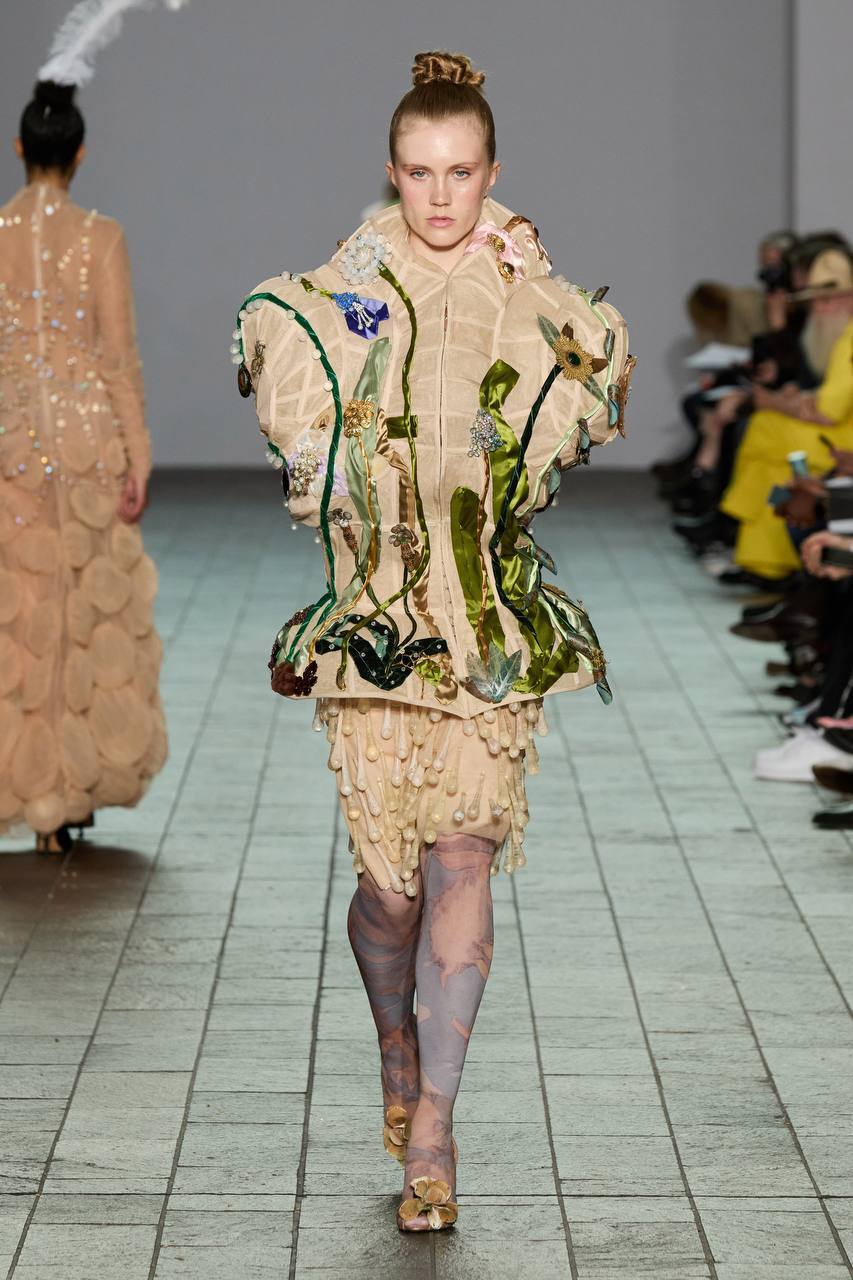
The look "The witch"
The final look by Antonio from his collection "A Walk in the Woods" at Central Saint Martins.
“The further you go into the collection, the deeper you immerse yourself in the forest: the first few looks illustrated its inhabitants — flora and fauna, but after that, the collection gradually shifts to your fears, such as the corpse and, in this case, the witch.”
The final look by Antonio from his collection "A Walk in the Woods" at Central Saint Martins.
“The further you go into the collection, the deeper you immerse yourself in the forest: the first few looks illustrated its inhabitants — flora and fauna, but after that, the collection gradually shifts to your fears, such as the corpse and, in this case, the witch.”
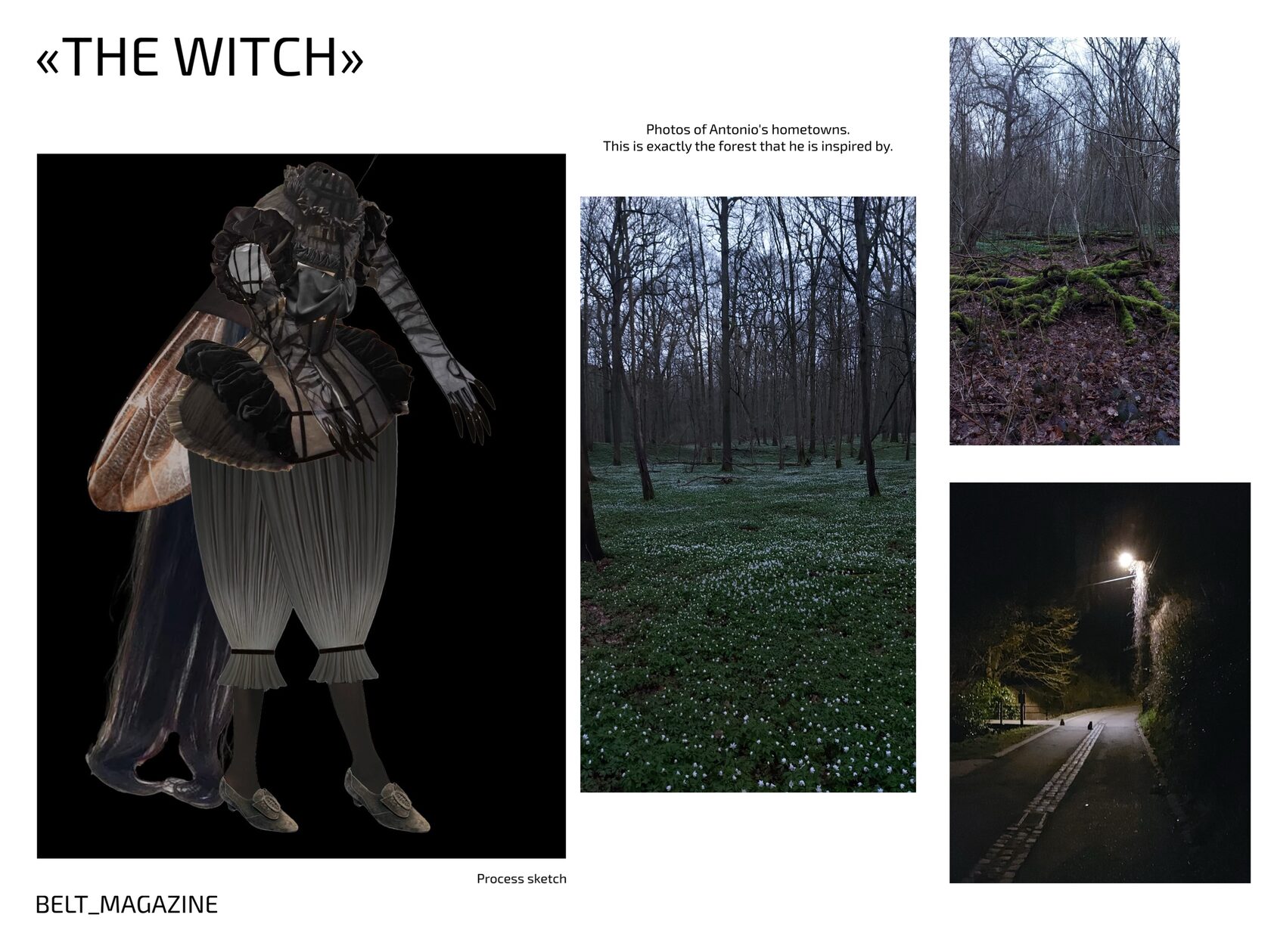
"As for the tailoring, the internal structure (the framework) of this look began to take shape back in November, and I worked on it intermittently until about a month before the show, when we finally got the green light to produce all the elements. I really love the Baba Yaga image, and I wanted to interpret it for Belgian folklore. What does the key on the chest mean? In many stories and tales about witches that I read during my research, keys and keyholes that only a witch could open were often mentioned. So this is a kind of reference to that.”
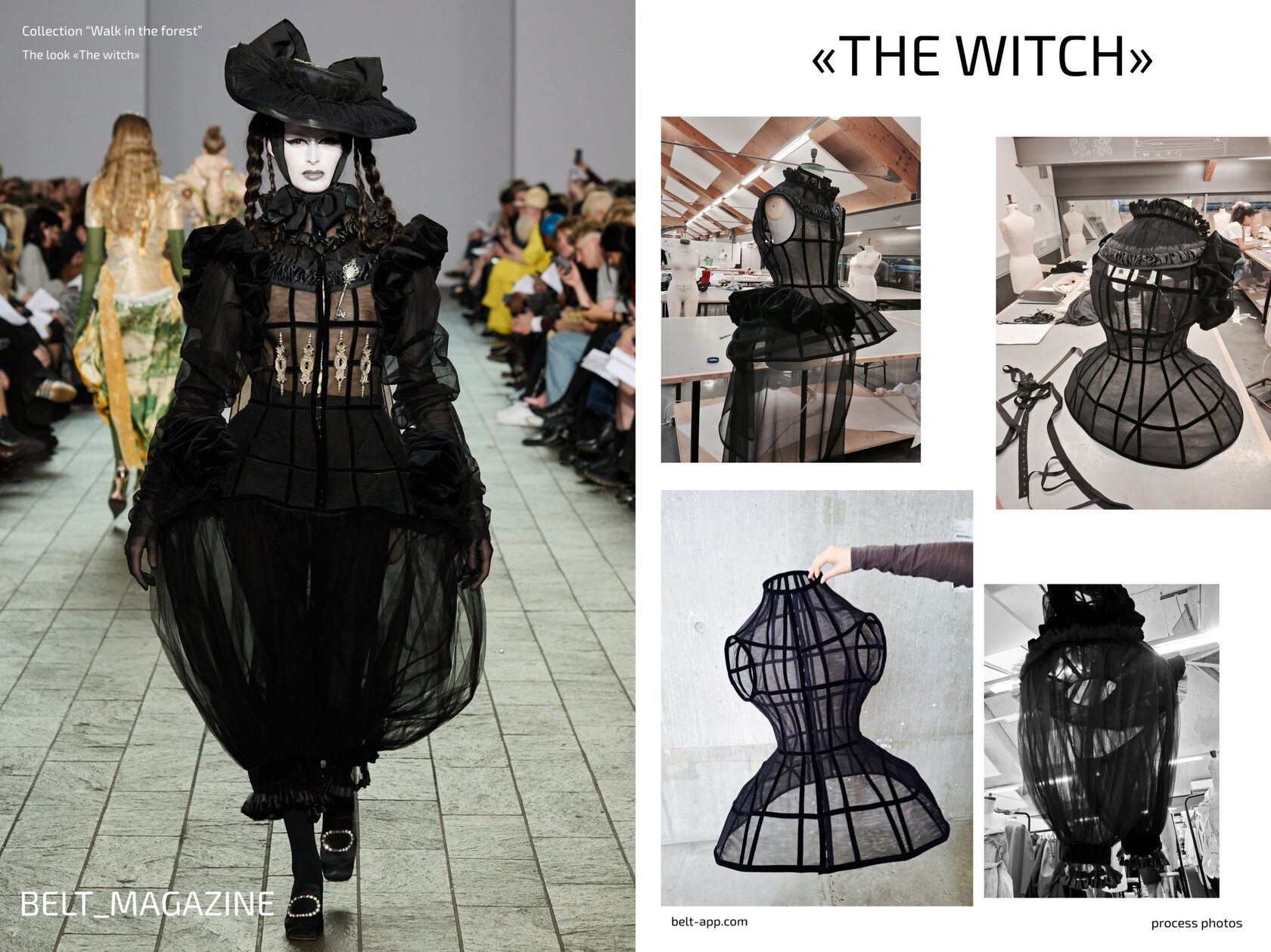
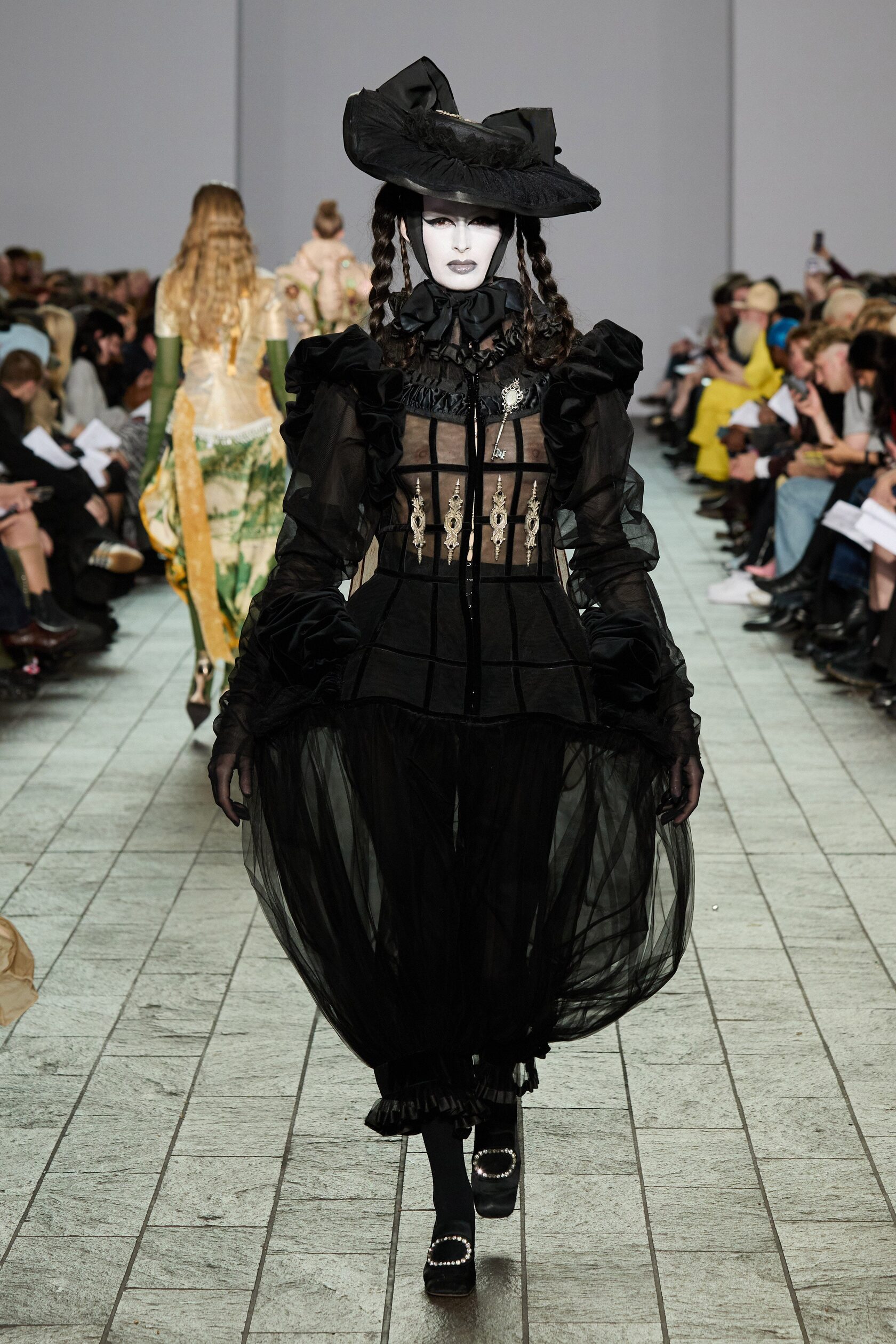
Perhaps this is one of the most memorable collections from the recent Central Saint Martins show, reflecting the beauty of flora and fauna that we, unfortunately, do not always notice in our fast-paced lives.
But that’s not all! During our conversation with Antonio, we asked what advice he would give to young designers just starting out, and here’s what he told us:
“My advice to young people is not to neglect in-depth study of sewing, because once you learn to sew well, you can set more ambitious goals in creating clothing. And probably, anyone who wants to achieve something should read as much as possible about art, so that in their design practice they refer not only to fashion but to something more!”
Antonio Femia.
“My advice to young people is not to neglect in-depth study of sewing, because once you learn to sew well, you can set more ambitious goals in creating clothing. And probably, anyone who wants to achieve something should read as much as possible about art, so that in their design practice they refer not only to fashion but to something more!”
Antonio Femia.
